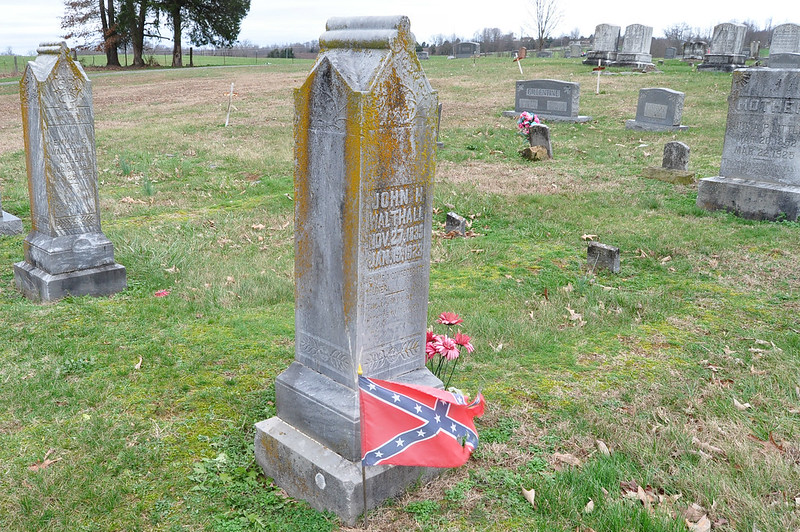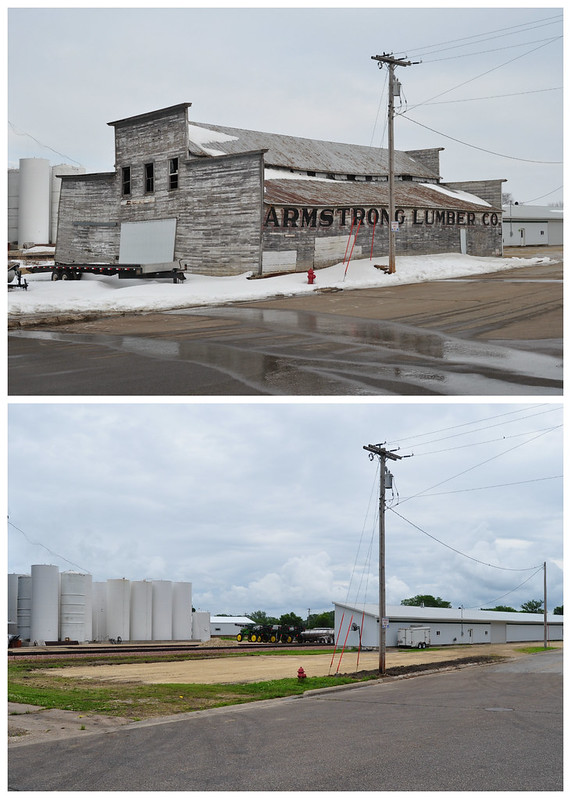Here in Iowa the default view found in many area cemeteries is a mixture of generations including those who fought in wars. For the most part Civil War related soldiers and sailors who are buried in Iowa are identified as having fought for the Union. Their graves typically include a bronze Grand Army of the Republic (GAR) fraternal star along with a military headstone.
Things are different just a few states away in Tennessee. There you can find cemeteries with markers of soldiers who fought for the South under the Stars and Bars. Such is the case in this Monroe, Tennessee country cemetery located just a few miles from the Kentucky border.
John H. Walthall’s gravestone is inscribed with the description, “He was a Confederate Soldier” on the south facing portion of the marker. The Stars and Bars flag was flying close to John’s grave on the day we visited the cemetery in search of a different family lineage. In fact there were probably another four or five tiny flags marking where Confederate soldiers are buried. As I recall all of those soldiers lived several years after the war.
In Iowa, I have seen the Confederate battle flag flying over a few gravesites in Iowa’s only National Cemetery located in Keokuk. During the Civil War the Mississippi River town established five hospitals to care for the wounded from both sides. When Southern soldiers perished at the Keokuk hospitals they were buried near their Union cousins in what would become known as the Keokuk National Cemetery.
I’m guessing that scores of former Southern soldiers came to Iowa after the war, lived their lives and are buried here. Perhaps their southern military identification was suggested to be left off their headstones by surviving family members who wanted to just move on with their lives rather than inflame. Its an interesting subject to explore further.


